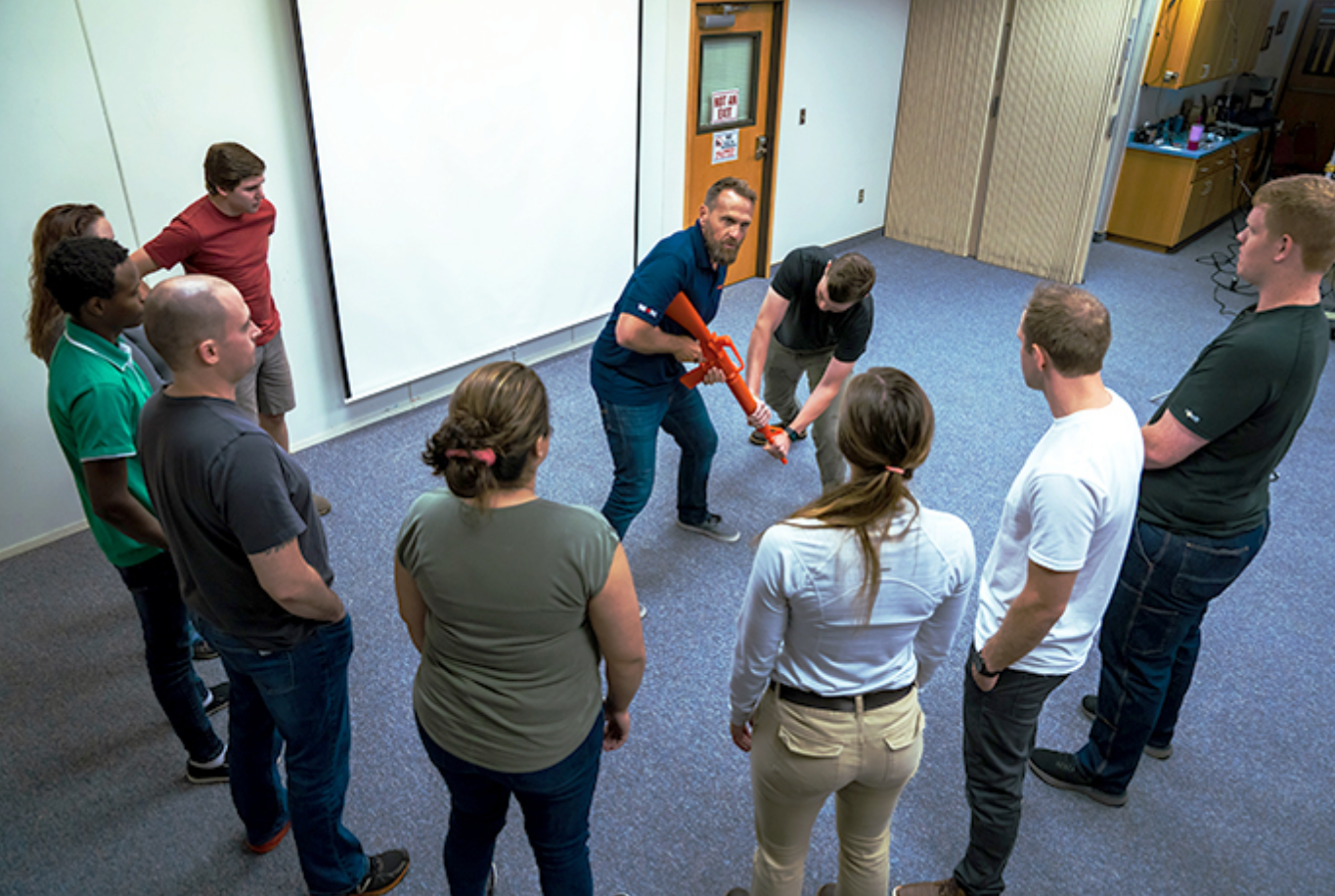How Active Shooter Training Can Save Lives in Situation Situations
How Active Shooter Training Can Save Lives in Situation Situations
Blog Article
Implementing Energetic Shooter Training: Ideal Practices for Creating a Safe and Prepared Neighborhood Atmosphere
As communities confront the disturbing fact of energetic shooter incidents, the implementation of thorough training programs becomes essential. A successful method hinges on not only the development of tailored curricula that resolve local threats however also the involvement of varied stakeholders. By employing a variety of training approaches, neighborhoods can ensure that all members are furnished with crucial skills. However, the obstacle hinges on maintaining an adaptive structure that advances with emerging threats. What are the critical components that can transform a conventional training program right into a robust model for neighborhood durability?

Comprehending the Need for Educating
In an age marked by boosting occurrences of physical violence in public spaces, comprehending the need for active shooter training has never ever been more critical. Thorough training efforts can gear up participants with the knowledge and skills to respond decisively.
Moreover, the emotional impact of violence on individuals and neighborhoods can not be overemphasized. Training promotes a feeling of empowerment and readiness, making it possible for people to feel more safe in their environments. It also promotes a culture of safety, where recognition and alertness end up being indispensable parts of everyday life. The advantages of energetic shooter training prolong past immediate response; they include boosting interaction procedures and boosting total precaution within organizations.
Key Components of Effective Programs
Reliable active shooter training programs integrate several crucial elements that boost readiness and feedback capacities. Initially, comprehensive curriculum advancement is necessary, guaranteeing that training content matters, evidence-based, and customized to the particular demands of the organization or community. This includes comprehending the characteristics of energetic shooter occurrences and the psychological influence on people entailed.
Second, sensible training circumstances need to be employed to simulate prospective circumstances, permitting participants to practice decision-making and response strategies in a regulated environment. These drills help with muscle mass memory and develop confidence amongst participants.
Third, an emphasis on communication protocols is critical. Developing clear lines of communication among police, emergency -responders, and participants ensures collaborated actions throughout a case. Routine updates and refresher courses aid keep communication pathways clear and effective.
4th, continuous assessment and comments systems need to be integrated into the training program - active shooter training. Evaluating the efficiency of training through participant responses and efficiency metrics allows for continual enhancement
Finally, cultivating a culture of safety and security and readiness within the area urges alertness and aggressive steps, ensuring that people are not just experienced but likewise participated in preserving a secure setting.
Engaging Community Stakeholders

To efficiently engage these stakeholders, it is necessary to connect the goals and benefits of the training. Hosting informative sessions can help clarify the training's objective, address concerns, and lay out the roles each stakeholder might play. Producing a stakeholder consultatory board can recommended you read help with ongoing dialogue, enabling for varied perspectives and insights to be integrated right into the training program.
Structure connections with area leaders and companies is additionally crucial. Their support can boost outreach initiatives, boost involvement, and make certain that training is tailored to the one-of-a-kind requirements of the community. Additionally, stakeholders can aid in sharing info and resources, strengthening the message of safety and security and preparedness.
Ultimately, engaging neighborhood stakeholders not just enhances check it out the training effort however also cultivates a feeling of ownership among homeowners, causing a more resistant and enlightened area with the ability of reacting effectively to potential threats.
Educating Distribution Approaches
Using a range of training delivery approaches is vital to fit the diverse understanding styles and requirements of individuals in energetic shooter training programs (active shooter training). Effective training can take numerous types, including talks, hands-on simulations, on the internet components, and interactive workshops. Each approach serves a distinct purpose and can boost the general discovering experience

Online modules offer flexibility and ease of access, enabling participants to find out at their very own rate. These can include videos, tests, and conversations to determine understanding. Interactive workshops motivate seminar and problem-solving, advertising teamwork and communication skills.
Incorporating a blended method that combines these approaches not just enhances the training experience however additionally makes sure that individuals are better prepared to react efficiently in the occasion of an active shooter circumstance (active shooter training). By addressing numerous discovering choices, companies can create a much more informed and receptive neighborhood
Constant Assessment and Improvement
Normal assessment and improvement of energetic shooter training programs are crucial to maintaining their relevance and performance. As risks progress, so have to the strategies and techniques employed in training. Continuous assessment ensures that training content reflects the current knowledge on active shooter occurrences, integrating lessons discovered from recent events and adjusting for arising patterns.
To facilitate this procedure, companies ought to establish responses devices that include participant assessments, specialist testimonials, and occurrence debriefs. Gathering data on individual performance throughout drills and workouts is vital, as it highlights areas needing improvement and informs future training sessions. Furthermore, engaging with regulation enforcement and emergency responders can offer useful understandings into the practicality and applicability of training methods.
Consistently arranged reviews of training materials and strategies should be mandated, cultivating an environment of advancement and flexibility. Organizations must also motivate a culture of recurring knowing, where personnel feel empowered to suggest adjustments based on their experiences. By devoting to continuous examination and improvement, companies not just enhance the effectiveness of their energetic shooter training programs however additionally enhance their overall dedication to safety and security and preparedness within the neighborhood.
Final Thought
In conclusion, reliable application of active shooter training demands an extensive technique that prioritizes area interaction and practical simulations. Eventually, a commitment to ongoing training and renovation cultivates a society of vigilance and readiness, making certain a much safer environment for all neighborhood members.
Report this page